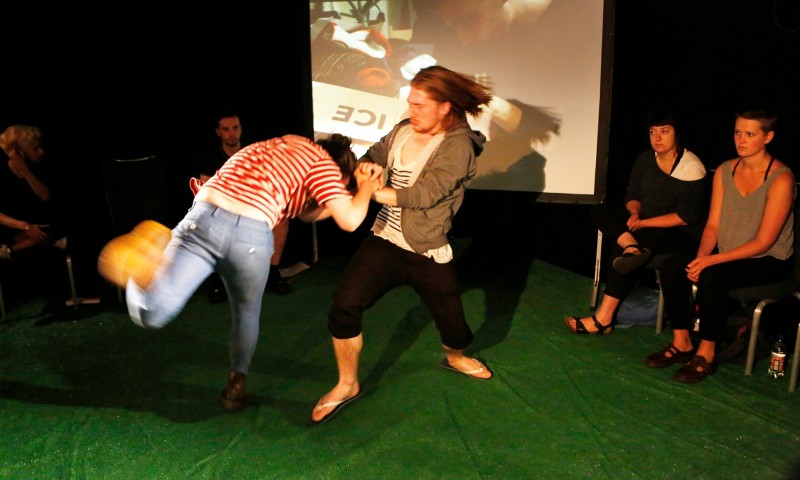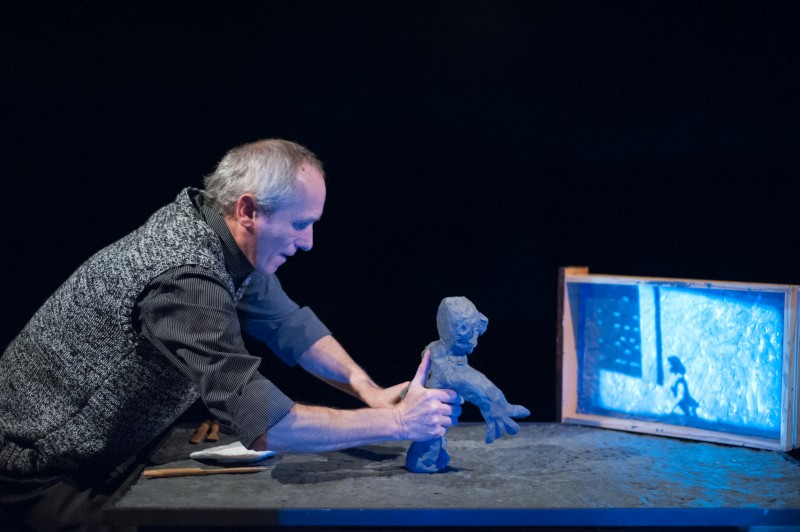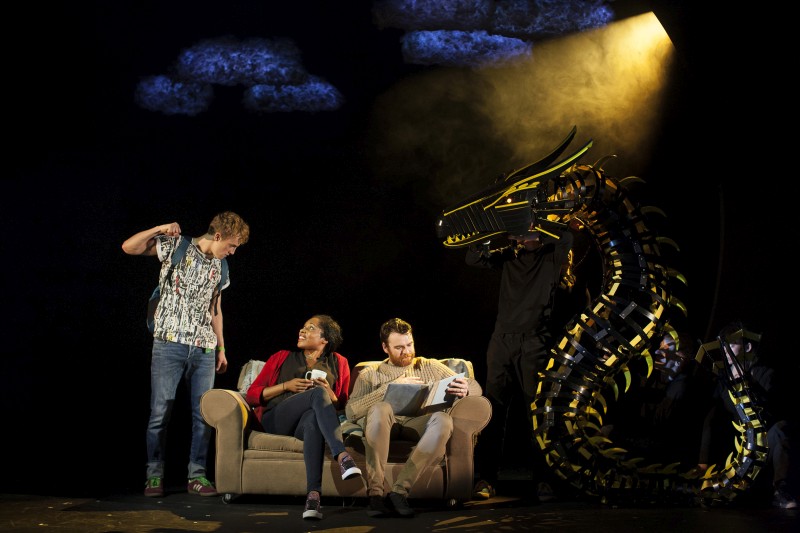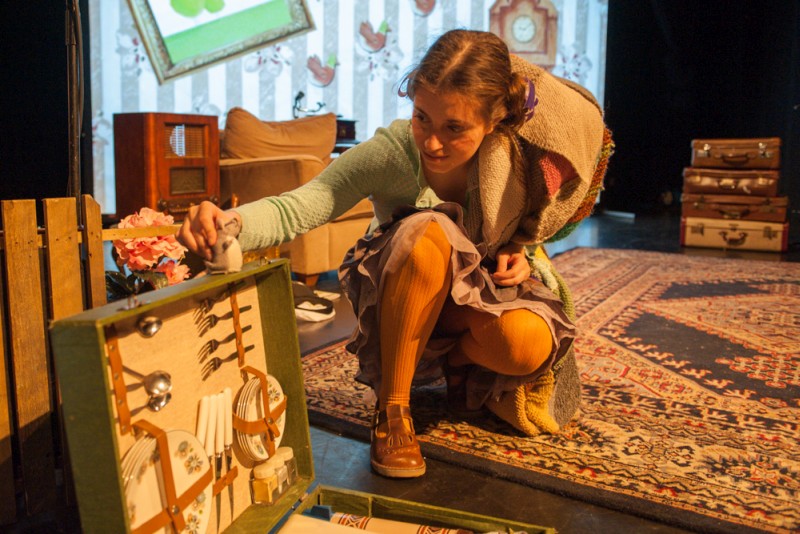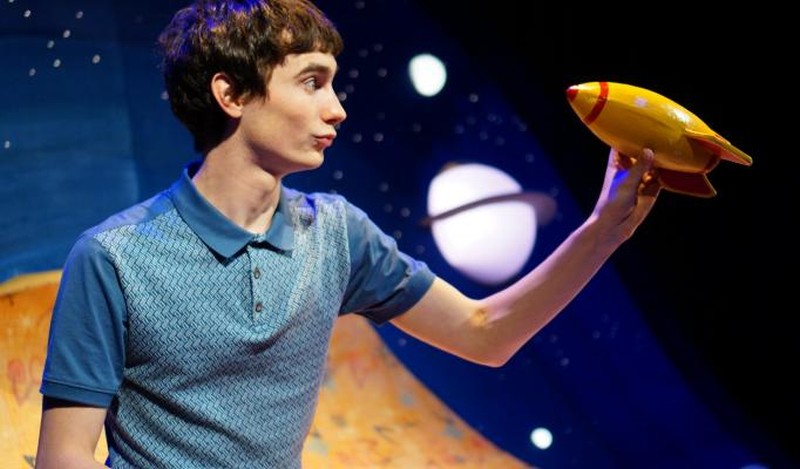 This performance recaptures the intense interest in space, rockets and science of the late 1960s for an audience of children who won’t remember it and adults who might. A simple set of two half circles, one vertical backdrop, and one horizontal floor, with a raised centre area decorated with planetary formations, creates the playing area for the two performers who sit waiting patiently onstage for the audience to settle. Suddenly with a voiceover rocket-launch-style countdown we’re off into the life of Alfie White, a schoolboy who is obsessed with space, on a mission to find his Dad with the help of his friend Meg. While Jordan Turner plays Alfie throughout the piece with a lanky precision, it’s up to his co-performer Lucy Tuck to play every other character in the performance. Lucy manages to find a voice and physicality for all of the various roles in the show, keeping the well worked out plot rolling along.
This performance recaptures the intense interest in space, rockets and science of the late 1960s for an audience of children who won’t remember it and adults who might. A simple set of two half circles, one vertical backdrop, and one horizontal floor, with a raised centre area decorated with planetary formations, creates the playing area for the two performers who sit waiting patiently onstage for the audience to settle. Suddenly with a voiceover rocket-launch-style countdown we’re off into the life of Alfie White, a schoolboy who is obsessed with space, on a mission to find his Dad with the help of his friend Meg. While Jordan Turner plays Alfie throughout the piece with a lanky precision, it’s up to his co-performer Lucy Tuck to play every other character in the performance. Lucy manages to find a voice and physicality for all of the various roles in the show, keeping the well worked out plot rolling along.
There are some wonderful set pieces of 60s music, physical performance, and science geekery. Harking back as it does to a pre-digital age with vinyl records, the space race, and early pop music, this show could have easily been hard for today’s children to understand, but Tall Stories’ storytelling by Olivia Jacobs and Toby Mitchell effectively captures the attention of older children with its sense of family and mystery.

